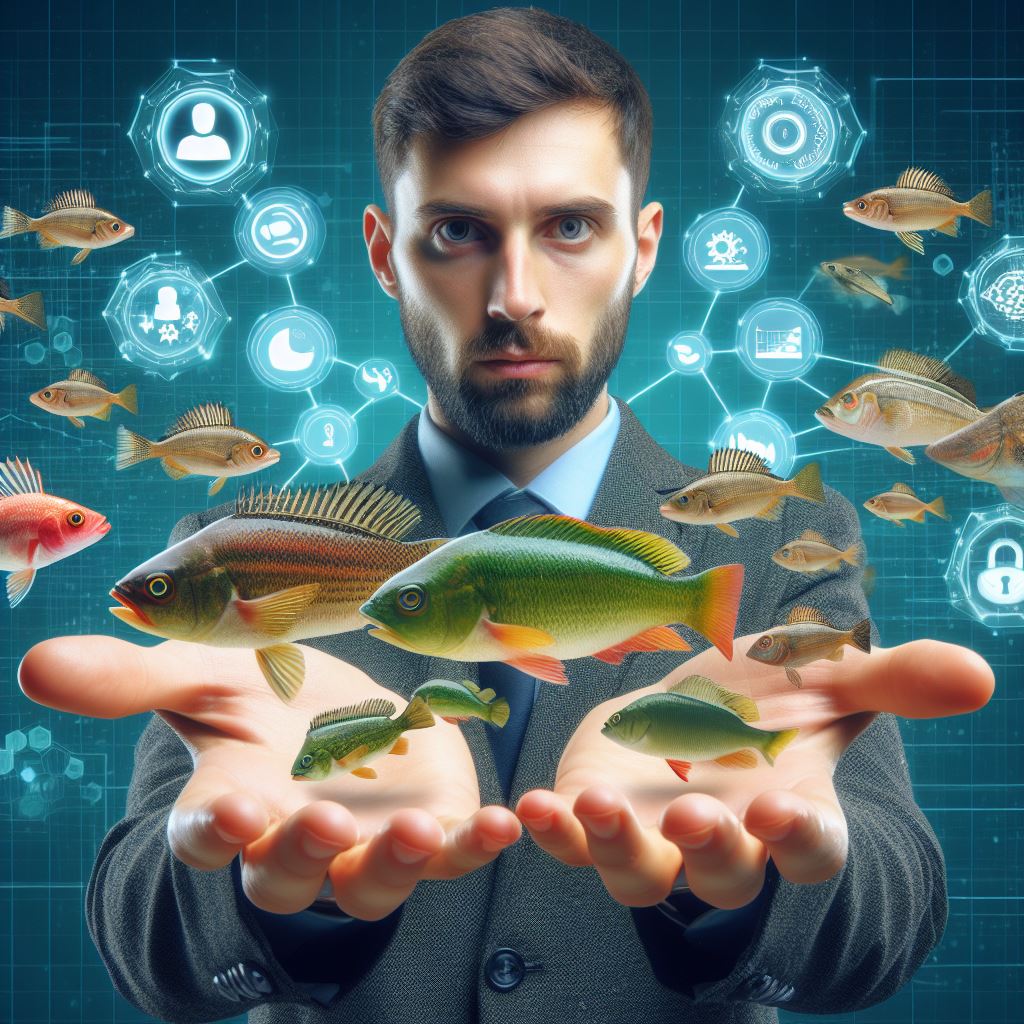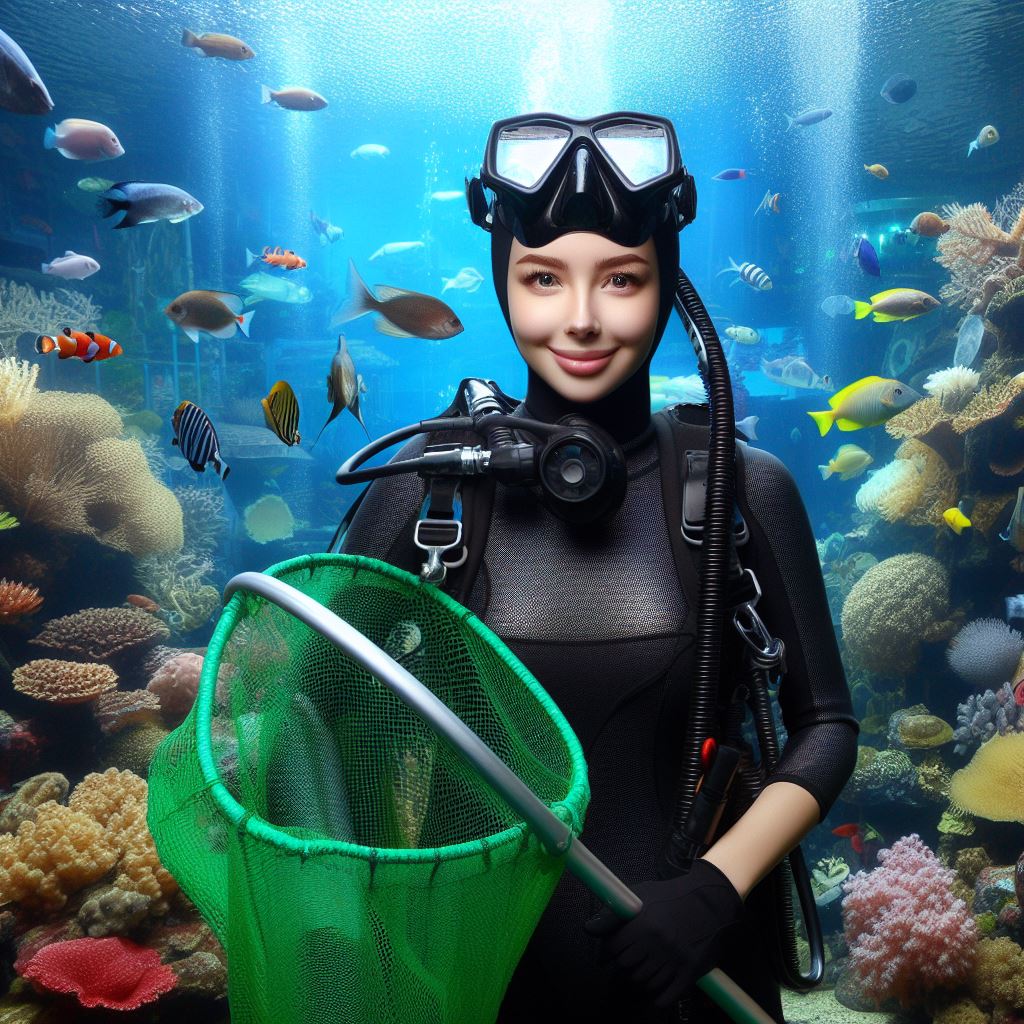Introduction
Brief explanation of Aquaculture Health
Let’s Explore Aquaculture Health: Fish Disease Management
Aquaculture health is vital for maintaining the wellness and productivity of fish.
Proper disease management is crucial to prevent and control outbreaks, ensuring economic stability and environmental sustainability in aquaculture operations.
The health of fish affects not only the industry but also public health and food security.
Disease management involves proactive measures such as regular monitoring, vaccination, and biosecurity protocols.
It also includes prompt diagnosis, effective treatment, and appropriate disposal of infected or dead fish.
Timely interventions can reduce the transmission of diseases, protect fish populations, and minimize financial losses.
Importance of Fish Disease Management
Fish disease management is a complex process requiring comprehensive knowledge, expertise, and collaboration among aquaculturists, researchers, veterinarians, and regulatory authorities.
It is essential to understand the causes, symptoms, and spread of diseases to implement suitable control strategies.
Monitoring and surveillance systems help identify potential disease risks and enable prompt actions.
Integration of innovative technologies, such as molecular diagnostic tools, can aid in early detection and accurate diagnosis.
Prevention is always better than cure, and it is essential to prioritize preventive measures like vaccination, quarantine, and maintaining ideal water quality and nutrition.
Effective disease management practices not only safeguard fish health but also contribute to sustainable aquaculture production and protect natural resources.
Therefore, fish disease management plays a critical role in maintaining the health and well-being of fish populations, ensuring the sustainability of aquaculture operations.
Types of Fish Diseases
Bacterial Infections
- Common bacterial diseases in aquaculture include fin rot and bacterial gill disease.
- Symptoms of bacterial infections include ulcers, frayed fins, and abnormal swimming behavior.
- Management strategies for bacterial infections involve maintaining good water quality, proper nutrition, and vaccination programs.
Viral Infections
- Common viral diseases in aquaculture include viral hemorrhagic septicemia and infectious pancreatic necrosis.
- Symptoms of viral infections include tissue hemorrhages, organ damage, and reduced growth rates.
- Management strategies for viral infections include strict biosecurity measures, disinfection protocols, and genetic resistance breeding programs.
Parasitic Infections
- Common parasitic diseases in aquaculture include ichthyophthiriasis and gyrodactylosis.
- Symptoms of parasitic infections include skin lesions, excessive mucus production, and lethargy.
- Management strategies for parasitic infections include proper quarantine protocols, regular health checks, and use of anti-parasitic medications.
Read: Biosecurity in Livestock Farms: Key Practices
Transform Your Agribusiness
Unlock your farm's potential with expert advice tailored to your needs. Get actionable steps that drive real results.
Get StartedPrevention and Control Measures
Biosecurity protocols
- Implement quarantine procedures for new fish to prevent the introduction of diseases.
- Safely separate infected fish from healthy ones to minimize the spread of diseases.
- Maintain strict sanitation practices in fish farms to reduce the risk of disease outbreaks.
Vaccinations
- Recognize the importance of vaccines in maintaining fish health and preventing diseases.
- Choose the appropriate vaccines for different diseases to enhance immune protection.
- Administer vaccines correctly and assess their effectiveness in preventing diseases.
Nutritional Management
- Provide balanced feed to ensure optimal nutrition and promote overall fish health.
- Supplement essential nutrients to support the immune system and improve resistance to diseases.
- Understand the role of nutrition in disease prevention and incorporate it into management practices.
Read: Horse Health: Equine Disease Prevention

Early Detection and Diagnosis
Regular health monitoring
Regular health monitoring is crucial in managing the overall health and well-being of fish in aquaculture systems.
By actively looking out for signs of fish diseases, early detection and prompt action can be taken to prevent the spread and impact of these ailments.
Signs of fish diseases to look out for
Fish in poor health typically display visible symptoms such as abnormal behavior, loss of appetite, lesions or sores, discoloration, excessive mucus production, or excessive fin erosion.
Any abnormality should be carefully observed and documented.
Routine health checks in aquaculture
Regular health checks involve closely observing fish in the aquaculture system, inspecting their physical appearance, and monitoring their behavior.
This can be done by aquaculture professionals or trained personnel who have a keen eye for the early signs of fish diseases.
Importance of early detection
Early detection is vital because it allows for timely intervention, preventing the disease from spreading to other fish populations within the aquaculture system.
It also increases the chances of successful treatment and reduces potential economic losses.
Diagnostic methods
Diagnostic methods play a vital role in identifying fish diseases accurately and effectively.
They provide valuable insights into the specific disease causing the health issues observed in the fish population.
Sampling techniques
Collecting samples from fish exhibiting suspicious symptoms is essential for accurate diagnosis.
These samples may include skin scrapings, fin clips, blood samples, or gill biopsies to be analyzed further in a laboratory.
Laboratory testing for accurate diagnosis
Laboratory testing provides more precise information regarding the nature of the disease affecting the fish.
Techniques such as bacterial cultures, PCR (polymerase chain reaction), viral isolation, or histopathology can help identify the causative agent.
Collaboration with aquatic health professionals
Collaborating with aquatic health professionals, such as fish pathologists or veterinarians specialized in aquatic animals, strengthens the diagnostic process.
Their expertise and experience can contribute to accurate interpretations of diagnostic results and the development of effective treatment strategies.
Most importantly, early detection and diagnosis are fundamental pillars of effective fish disease management in aquaculture.
Regular health monitoring, recognizing signs of fish diseases, and conducting routine health checks are essential practices.
Implementing sampling techniques, utilizing laboratory testing, and seeking collaboration with aquatic health professionals ensure accurate diagnosis and appropriate actions to minimize the impact of diseases on fish populations.
Read: Dairy Cow Health: Preventing Common Diseases
Treatment Options
Ensuring the health of fish stocks in aquaculture requires a nuanced and comprehensive approach to disease management.
In this section, we delve into the multifaceted landscape of treatment options, recognizing the importance of balancing traditional methods with innovative approaches for sustainable aquaculture operations.
Medications and antimicrobials
Conventional medications and antimicrobials play a pivotal role in the treatment arsenal.
Showcase Your Farming Business
Publish your professional farming services profile on our blog for a one-time fee of $200 and reach a dedicated audience of farmers and agribusiness owners.
Publish Your ProfileAntibiotics like oxytetracycline and antiparasitics such as formalin are commonly employed to combat bacterial infections and external parasites, respectively.
However, the conscientious usage of these medications is paramount, demanding adherence to precise guidelines and administration under professional guidance.
The use of antibiotics raises concerns about the development of antibiotic resistance and potential adverse effects on non-target species, underscoring the need for judicious application.
Alternative therapies
In parallel, alternative therapies offer a promising avenue.
Incorporating herbal remedies like aloe vera and leveraging probiotics for gut health provides alternatives with potential benefits, including minimized chemical residues.
Yet, the variability in efficacy and consistent outcomes highlights the importance of careful consideration when opting for alternative treatments.
The evolving landscape of fish disease management extends to innovative approaches.
Ongoing research explores immunostimulants aimed at bolstering disease resistance within fish populations.
Additionally, the application of nanotechnology in drug delivery represents a cutting-edge avenue to enhance treatment efficacy while minimizing environmental impacts.
The holistic approach to disease management acknowledges the interconnectedness of aquaculture systems and the broader environment.
By embracing a diversity of treatment options, aquaculturists can develop resilient strategies that not only address immediate health concerns but also contribute to the long-term sustainability of their operations.
As aquaculturists navigate this intricate landscape, continual exploration and adaptation are key.
The dynamic nature of aquatic ecosystems and the potential emergence of new diseases necessitate a proactive stance.
Integrating traditional medications with alternative therapies and staying abreast of innovative research ensures a comprehensive and sustainable approach.
In essence, the complex world of aquaculture health demands a thoughtful and adaptable strategy for disease management.
Balancing the use of medications, exploring alternative therapies, and embracing cutting-edge innovations are integral to safeguarding the health of fish stocks.
Such a holistic approach not only mitigates the immediate risks posed by diseases but also positions aquaculture operations for resilience and success in the face of evolving challenges.
By marrying tradition with innovation, aquaculturists can foster a sustainable and thriving industry, ensuring the health and vitality of their aquatic ecosystems for generations to come.
Read: Swine Flu: Protecting Your Pig Herds
Delve into the Subject: Eco Duck Rearing Principles
Regulatory Considerations and Best Practices
Fish disease management goes beyond the responsibility of individual fish farmers.
Adhering to regulatory considerations and implementing industry best practices play an essential role in mitigating the risk of disease outbreaks, maintaining healthy fish stocks, and safeguarding the reputation of the aquaculture industry.
Legal requirements for fish disease management
Compliance with national regulations
Fish farmers must comply with national regulations governing fish disease management.
These regulations are in place to prevent the spread of diseases, protect the environment, and ensure the health and welfare of the farmed fish.
By adhering to these regulations, fish farmers contribute to the overall health and sustainability of the aquaculture industry.
Reporting and record-keeping obligations
Fish farms have reporting and record-keeping obligations to regulatory authorities.
This includes reporting any signs of disease, mortalities, or other abnormal health conditions in their fish populations.
By promptly reporting these incidents, authorities can take necessary measures to prevent the spread of the disease and mitigate its impact on other farms.
Collaboration with regulatory authorities
Effective fish disease management relies on collaboration between fish farmers and regulatory authorities.
Close cooperation allows for timely exchange of information, implementation of preventive measures, and coordinated response to disease outbreaks.
Fish farmers should work hand-in-hand with authorities to develop and implement disease prevention and control strategies.
Industry best practices
Adoption of industry standards
Fish farmers should adopt industry standards for disease management.
These standards are developed based on scientific research, best practices, and lessons learned from past experiences.
By standardizing disease management practices, the industry can ensure consistent and effective measures are implemented across farms.
Sharing knowledge and experiences
The sharing of knowledge and experiences within the industry is crucial for disease management. =
Fish farmers should actively participate in forums, workshops, and conferences to exchange information, discuss challenges, and share successful strategies.
Collaboration and open communication enhance the industry’s collective ability to combat diseases.
Continuous improvement in disease management
Fish farmers must continuously strive to improve their disease management practices.
This involves staying updated with scientific advancements, technological innovations, and regulatory changes.
Implementing new techniques, investing in research and development, and adopting innovative solutions contribute to the long-term success of disease prevention and control efforts.
Showcase Your Farming Business
Publish your professional farming services profile on our blog for a one-time fee of $200 and reach a dedicated audience of farmers and agribusiness owners.
Publish Your ProfileIn fact, fish disease management is not solely the responsibility of individual fish farmers but requires compliance with legal requirements and adoption of industry best practices.
Adhering to national regulations, fulfilling reporting obligations, and collaborating with regulatory authorities are vital for disease prevention.
Furthermore, the industry must adopt industry standards, share knowledge and experiences, and continuously improve disease management practices.
By prioritizing these regulatory considerations and best practices, the aquaculture industry can effectively mitigate the risk of fish diseases and ensure the long-term sustainability of fish farms.
Conclusion
Recap of main points
In this section, we explored the importance of fish disease management in aquaculture.
We discussed various diseases affecting fish and the negative consequences they can have on the industry.
Importance of proactive disease management in aquaculture
Effective disease management strategies are crucial for ensuring the health of fish stocks and maintaining the sustainability of aquaculture operations.
By implementing proactive measures, farmers can prevent disease outbreaks and minimize economic losses.
Call to action for farmers to prioritize fish health
Farmers must recognize the significance of fish health and make it a top priority in their operations.
Regular monitoring, proper nutrition, and strict biosecurity protocols are essential for disease prevention and control.
By investing in fish health, farmers can protect their livelihoods and contribute to a sustainable aquaculture industry.
Proactive disease management is vital for the long-term success of aquaculture.
Fish health should be a priority for farmers, and industry-wide collaboration is necessary to address the challenges associated with fish diseases.
By working together, we can ensure the health and sustainability of aquaculture for generations to come.




